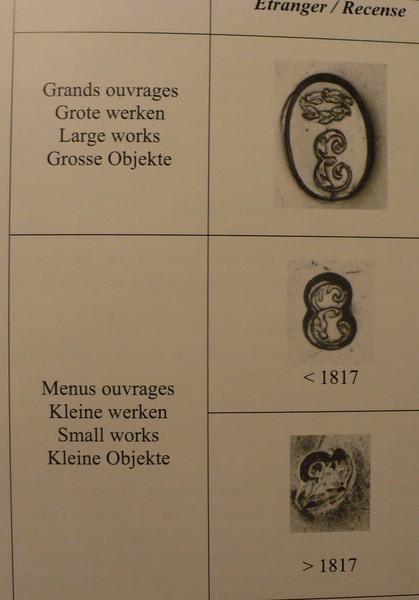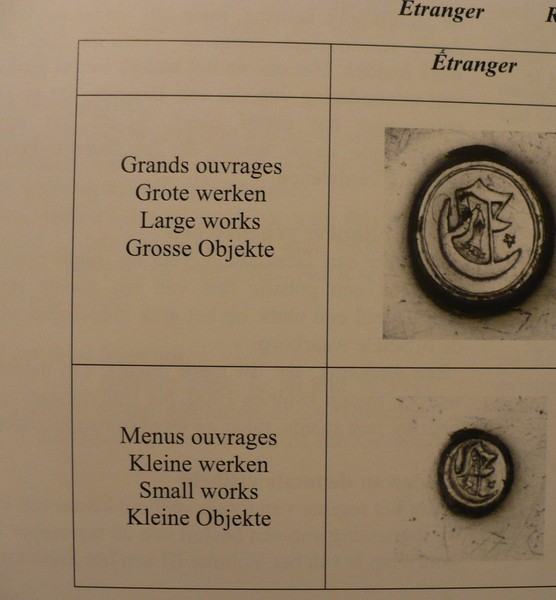I had more time for my thoughts :
oel wrote:Most probably the fork returned to the trade during the time of the Southern Netherlands 1815-1832, the flowery E (étranger) under a wreath; import & duty mark destined for all imported, unmarked and invalid marked objects of foreign, national and unknown origin. The mark does not give any guarantee of a precious metal standard or fineness.
I bought this fork in the Province of Liège , 4 kilometers from the city of Liege .
If he would have been sold to the Southern Netherlands, it had the "flowered V" insisted (1817-1842)
The small mark of the Northern Netherlands, the flowerd V was also user in the Southern Netherlands 1817 - 1842
oel wrote: The Gothic E (étranger) import and duty mark used in the Kingdom of Belgium for all imported, unmarked objects of foreign, national and unknown origin. Again the mark did not guarantee fineness, mark used 1832-1869.
This was for both import and Duty Mark of 1814-1842 and 1832-1868
These marks do not give any garantree of a precious metal standard or finess.
I think the Family (Monogram LL) inspected the silver again (Gothic E (étranger) and import duty mark from 1815 to 1842) and Assay testing (trembleersteek)
In connection with nullification (ongeldigheids verklaring - 1816) of the hallmarks of the Kingdom of Holland and the French Regime. Objects with the expired Hallmarks, it was possible, until September 9-1816 to be stamped with the sign of the foreign works, for free
The taxpayers should be warned with broadcasting and drumbeat in the southern Netherlands, this was already done in 1815.
oel wrote:And again the fork was offered for sale in the Kingdom of Belgium, when hallmarking was mandatory 1832-1869. In 1869 the Kingdom of Belgium stopped mandatory hallmarking
These are later (approximately 1832) again under assessment by the Family LL linked the new rules and Hallmarks of the Kingdom and Belgium provide import duty and Marks 1832 -1868.
My final thoughts are: that somewhere in the nullification (1816 ongeldigheids verklaring) the city mark is removed.
This was common in the French Regime, I have silver that are produced in the Dutch guild period and are imported by France.
All guild signs were removed (obscured) and equipped with French Hallmarks

Best Regards
Dendriet
I hope it's clear reading :)


